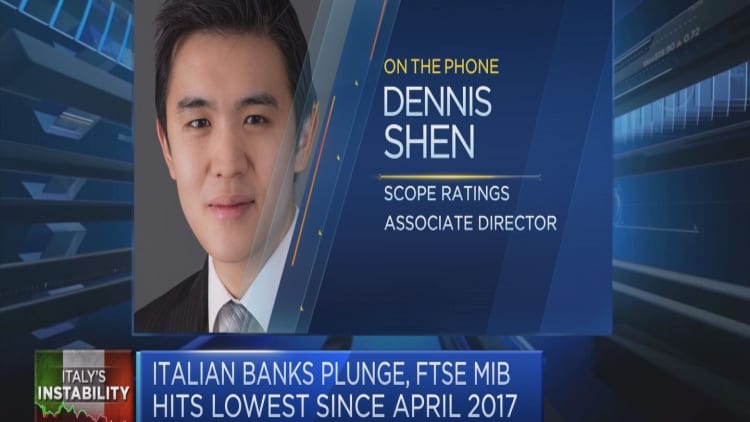Italian government bonds are increasingly seen as riskier investments given the anti-establishment Cabinet and its public spending plans — so much so, that Italian bonds are moving closer to being seen to be as risky as Greece's.
The yield on the 10-year Italian government bond is currently at 3.58 percent — the highest level in over five years.
The yield (or interest rate) on a bond — which is basically a piece of paper that, in this case, a government sells to raise money — indicates the perception that investors have about that investment.
For instance, if the yield on a bond is moving higher, it suggests that investors are associating more risk with that bond and, consequently are demanding a higher rate of interest in return for their investment.
Comparing the Italian 10-year bond to other government bonds in Europe, only Greece has a higher yield. Greece's yield on the 10-year bond is at 4.64 percent; whereas the equivalent yields in Portugal and Spain are at 1.95 and 1.59 percent, respectively.
The difference between these four yields suggest that Greece and Italy are seen to be riskier than Portugal and Spain.
Italian officials have denied that their spending plans put Rome in a similar situation to the one that Greece experienced back in 2010 and which led to three bailout programs.

Italy has become a top concern for investors over the past few weeks, after the new coalition government unveiled plans to increase public spending in the coming years. Italy has 2.3 trillion euros ($2.6 trillion) worth of debt and market players are worried that the higher spending will prevent Rome from reducing its huge debt pile.
The higher spending plans have also opened another line of confrontation between Rome and Brussels. On Monday, Italy's Deputy Prime Minister Matteo Salvini called the European Commission President and the Economic Affairs Commissioner "enemies" of Europe.
Brussels has raised concerns about the new spending plans in Italy. In a letter to Rome, last Friday, the European Commission said Italy's spending plans suggest a "significant deviation" from what Italy had agreed to last July.
The new spending targets point to a structural deterioration of 0.8 percent of gross domestic product (GDP) in 2019. In contrast, Italy had agreed to improve its structural deficit by 0.6 percent of GDP next year.


